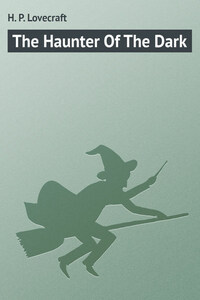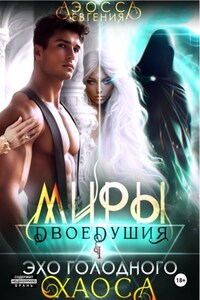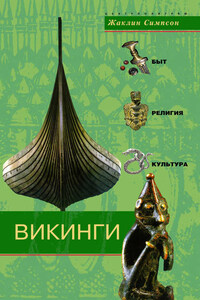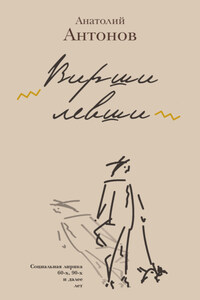(Dedicated to Robert Bloch)
I have seen the dark universe yawning
Where the black planets roll without aim,
Where they roll in their horror unheeded,
Without knowledge or lustre or name.
– Nemesis
Cautious investigators will hesitate to challenge the common belief that Robert Blake was killed by lightning, or by some profound nervous shock derived from an electrical discharge. It is true that the window he faced was unbroken, but nature has shown herself capable of many freakish performances. The expression on his face may easily have arisen from some obscure muscular source unrelated to anything he saw, while the entries in his diary are clearly the result of a fantastic imagination aroused by certain local superstitions and by certain old matters he had uncovered. As for the anomalous conditions at the deserted church of Federal Hill – the shrewd analyst is not slow in attributing them to some charlatanry, conscious or unconscious, with at least some of which Blake was secretly connected.
For after all, the victim was a writer and painter wholly devoted to the field of myth, dream, terror, and superstition, and avid in his quest for scenes and effects of a bizarre, spectral sort. His earlier stay in the city – a visit to a strange old man as deeply given to occult and forbidden lore as he – had ended amidst death and flame, and it must have been some morbid instinct which drew him back from his home in Milwaukee. He may have known of the old stories despite his statements to the contrary in the diary, and his death may have nipped in the bud some stupendous hoax destined to have a literary reflection.
Among those, however, who have examined and correlated all this evidence, there remain several who cling to less rational and commonplace theories. They are inclined to take much of Blake’s diary at its face value, and point significantly to certain facts such as the undoubted genuineness of the old church record, the verified existence of the disliked and unorthodox Starry Wisdom sect prior to 1877, the recorded disappearance of an inquisitive reporter named Edwin M. Lillibridge in 1893, and – above all – the look of monstrous, transfiguring fear on the face of the young writer when he died. It was one of these believers who, moved to fanatical extremes, threw into the bay the curiously angled stone and its strangely adorned metal box found in the old church steeple – the black windowless steeple, and not the tower where Blake’s diary said those things originally were. Though widely censured both officially and unofficially, this man – a reputable physician with a taste for odd folklore – averred that he had rid the earth of something too dangerous to rest upon it.
Between these two schools of opinion the reader must judge for himself. The papers have given the tangible details from a sceptical angle, leaving for others the drawing of the picture as Robert Blake saw it – or thought he saw it – or pretended to see it. Now studying the diary closely, dispassionately, and at leisure, let us summarize the dark chain of events from the expressed point of view of their chief actor.
Young Blake returned to Providence in the winter of 1934-5, taking the upper floor of a venerable dwelling in a grassy court off College Street – on the crest of the great eastward hill near the Brown University campus and behind the marble John Hay Library. It was a cosy and fascinating place, in a little garden oasis of village-like antiquity where huge, friendly cats sunned themselves atop a convenient shed. The square Georgian house had a monitor roof, classic doorway with fan carving, small-paned windows, and all the other earmarks of early nineteenth century workmanship. Inside were six-panelled doors, wide floor-boards, a curving colonial staircase, white Adam-period mantels, and a rear set of rooms three steps below the general level.
Blake’s study, a large southwest chamber, overlooked the front garden on one side, while its west windows – before one of which he had his desk – faced off from the brow of the hill and commanded a splendid view of the lower town’s outspread roofs and of the mystical sunsets that flamed behind them. On the far horizon were the open countryside’s purple slopes. Against these, some two miles away, rose the spectral hump of Federal Hill, bristling with huddled roofs and steeples whose remote outlines wavered mysteriously, taking fantastic forms as the smoke of the city swirled up and enmeshed them. Blake had a curious sense that he was looking upon some unknown, ethereal world which might or might not vanish in dream if ever he tried to seek it out and enter it in person.
Having sent home for most of his books, Blake bought some antique furniture suitable for his quarters and settled down to write and paint – living alone, and attending to the simple housework himself. His studio was in a north attic room, where the panes of the monitor roof furnished admirable lighting. During that first winter he produced five of his best-known short stories – The Burrower Beneath, The Stairs in the Crypt, Shaggai, In the Vale of Pnath, and The Feaster from the Stars – and painted seven canvases; studies of nameless, unhuman monsters, and profoundly alien, non-terrestrial landscapes.
At sunset he would often sit at his desk and gaze dreamily off at the outspread west – the dark towers of Memorial Hall just below, the Georgian court-house belfry, the lofty pinnacles of the downtown section, and that shimmering, spire-crowned mound in the distance whose unknown streets and labyrinthine gables so potently provoked his fancy. From his few local aquaintances he learned that the far-off slope was a vast Italian quarter, though most of the houses were remnant of older Yankee and Irish days. Now and then he would train his field-glasses on that spectral, unreachable world beyond the curling smoke; picking out individual roofs and chimneys and steeples, and speculating upon the bizarre and curious mysteries they might house. Even with optical aid Federal Hill seemed somehow alien, half fabulous, and linked to the unreal, intangible marvels of Blake’s own tales and pictures. The feeling would persist long after the hill had faded into the violet, lamp-starred twilight, and the court-house floodlights and the red Industrial Trust beacon had blazed up to make the night grotesque.
Of all the distant objects on Federal Hill, a certain huge, dark church most fascinated Blake. It stood out with especial distinctness at certain hours of the day, and at sunset the great tower and tapering steeple loomed blackly against the flaming sky. It seemed to rest on especially high ground; for the grimy facade, and the obliquely seen north side with sloping roof and the tops of great pointed windows, rose boldly above the tangle of surrounding ridgepoles and chimney-pots. Peculiarly grim and austere, it appeared to be built of stone, stained and weathered with the smoke and storms of a century and more. The style, so far as the glass could show, was that earliest experimental form of Gothic revival which preceded the stately Upjohn period and held over some of the outlines and proportions of the Georgian age. Perhaps it was reared around 1810 or 1815.












